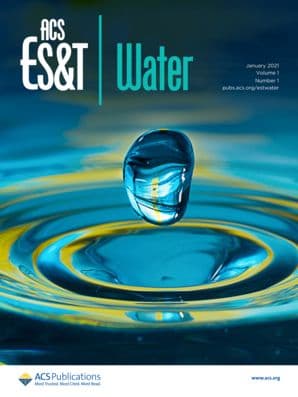People with infections can shed virus in their waste, which can be sprayed back into the room as aerosols and droplets when a toilet is flushed. This results in a significant risk of transmission between people using shared bathroom facilities.
It is well known that feces can contain high levels of pathogens such as norovirus, but it’s perhaps less recognized that viruses are also excreted in urine. This includes West Nile, Nipah, Rabies, Rubella, and Smallpox.
Studies have also revealed SARS-CoV-2, the virus responsible for COVID-19, to be present in the feces and urine of people with both symptomatic and asymptomatic infections. This realization paved the way for wastewater epidemiology to be used as a potential early warning system for outbreaks, providing critical information for public health interventions.1-3
On the tail end of the COVID-19 pandemic, taking a closer look at how viruses spread is an important way for us to manage transmission and improve hygiene. Finding ways to mitigate the risk of virus exposure from flushing requires an understanding of emissions, not only in terms of physical trajectories but also their viral content and infection potential.
Traditional toilets use a common mix flush format, with all waste entering a single bowl before being flushed away with high-pressure water. In contrast, diverting models can separate urine from the toilet water and solid waste via a small drain positioned above the main bowl. These systems were developed to allow key nutrients in urine to be recovered and processed into fertilizers, but the fact that these models also negate the need for a flush could translate into a decrease in virus emissions and improvements in human health.
In a new paper published in ACS ES&T Water, a team from the University of Michigan, USA, shared the results of their efforts to quantify these viral emissions. Other studies have typically measured either droplets or aerosols generated from flushing; in contrast, the researchers measured surrogate bacteriophages for urine- and fecal-associated viruses. They then compared the levels between a common mix flush toilet and urine-diverting toilet, aiming to capture the total number of infectious viruses emitted from each model.4
The results show that viral emissions in the diverting toilet were lower than the common flush by up to 1.2-log10 and 1.3-log10 for urine and fecal surrogates, respectively. The authors estimate that if urine was completely diverted, virus emissions could be reduced even further. The lower emissions observed with the urine-diverting toilet suggest users will have an overall reduced exposure to viruses from flushing and using shared bathroom spaces. The differences between the two toilet types seen in the study could be driven by flush pressures as well as toilet water volumes.4
Going one step further than urine diversion, new approaches could see decentralization of wastewater treatment. This is already happening in some rural areas in Japan, where systems that rely on biofilms are being used to treat domestic waste before release into the environment.5 While these results demonstrate that toilet type influences virus emission levels, there is scope for future work to evaluate feces as well as urine and to further analyze different ranges of flush pressures.

Stay Connected
References
- Mitranescu, A et al. Wastewater-Based Epidemiology for SARS-CoV-2 Biomarkers: Evaluation of Normalization Methods in Small and Large Communities in Southern Germany. ACS EST Water 2022, 2, 12, 2460–2470.
- Pillay, L. et al. Potential and Challenges Encountered in the Application of Wastewater-Based Epidemiology as an Early Warning System for COVID-19 Infections in South Africa. ACS EST Water 2022, 2, 11, 2105–2113.
- Zhan, O. et al. Relationships between SARS-CoV-2 in Wastewater and COVID-19 Clinical Cases and Hospitalizations, with and without Normalization against Indicators of Human Waste. ACS EST Water 2022, 2, 11, 1992–2003.
- Li, L. et al. Virus Emissions from Toilet Flushing: Comparing Urine-Diverting to Mix Flush Toilets. ACS EST Water 2023, 3, 2, 457–464.
- Li, A. et al. Onsite Source-Separation and Synergistic Treatment of Household Wastewater: Mechanism Elaboration, Technology Optimization, and Advantage Analysis. ACS EST Water 2022, 2, 8, 1332–1343.